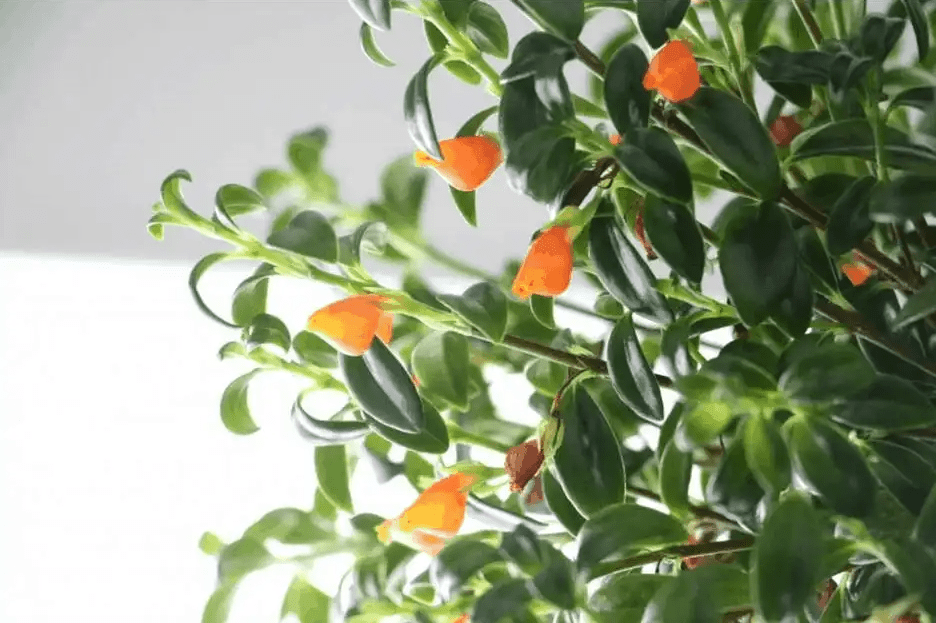There is nothing more refreshing than a bright dash of color in any room or garden. With masses of
bright orange-red petals and dark green leaves, the Guppy plant is not only refreshing to look at but is also relatively easy to grow and maintain. Unlike many fresh flowers, this plant has a long life, surviving for almost a decade when well maintained. If you are looking for a low maintenance plant to brighten up your window sill, hang in baskets in parts of your home, or give your garden a splash of color, this post is definitely for you.
The Guppy plant blooms all year round in the right conditions, making it an appealing option for your home, office, or garden. As you go through this article, be sure to note the simple but important details that will ensure the successful growth and maintenance of this plant.
Brief background of the Guppy plant
The Guppy plant is a beautiful, flowering tropical plant that thrives well in the tropical wilderness. It is also known as the Goldfish plant, ‘Kissing Lips,’ Nematanthus Gregarius, and clog plant. A typical Guppy has long stems, very bright petals, and dark glossy green leaves. This plant originated in Brazil and got most of its names from the vast masses of colorful colored flowers it has when it blooms.
Growing the guppy plant
Guppy plants can be propagated through stem cuttings. In the wild, they grow on other plants, especially on trees. The Guppy can easily root from stem tip cuttings. It is advisable to propagate through these stem cuttings in summer or spring. This is when temperatures are ideal for it to start growing and blooming. Be sure to pick stem tips that do not have flower buds, and that is between 2- 4 inches long.
Suitable soil.
The plant thrives in light and fast-draining soil with a slightly acidic pH of about 6.1-6.5. You can mix equal quantities of perlite, sorghum moss, and vermiculite to make good soil for it. The plant can be potted or put in hanging baskets. You could do well to use hanging baskets if your space permits as the flowers look heavenly dropping downwards.
Sunlight Exposure
To ensure proper growth, be sure to place the plant in bright but not direct light. Try exposing the Guppy to Northern or Eastern sun for a more extended full bloom. During winter, the plant sleeps, and indoor lights are suitable for it. It is likely to flower in summer after propagation, so proper maintenance during the winter season is crucial to ensure that the plant does not die before it fully blooms.
Care of The guppy plant

Water
In summer, only water the soil to make it moist and keep it that way. Regularly check the ground as this is crucial to the survival of the plant. Avoid overwatering the plant in winter. During that season, the soil should be kept drier than in summer as the environment is slightly humid then. It is essential to ensure that all year round the ground never entirely dry out. Also, do not overwater the plant as this will cause problems like leggy growth or lack of flowering.
Temperature
Keep the plant in temperatures of between 65-75 degrees Fahrenheit. Extremely high or low temperatures cause the leaves to drop or turn brown. Eventually, the plant will die if temperatures are not corrected.
Fertilizer
As the guppy plant grows, provide liquid fertilizer weekly to encourage blooming. The fertilizer should be weak and contain micronutrients. You could use controlled-release pellets as well so that your plant is regularly well fertilized.
Pruning
To keep the plant looking fresh, prune old or damaged leaves and flowers. Also, after flowering, prune the stems to promote branching and make the plant look bushier with thick, long branches. Since the plant may grow up to 3 feet high outdoors, pluck off stems to keep it short. It will make the plant look bushier and bloom better. When keeping it indoors in pots or baskets, larger stems will grow down the sides of the container. Keep these stems, and do not prune them. This makes a stunning display when the Guppy is in full flowering and full bloom.
Potting and repotting
It is wise to repot the plant every 2 to 3 years to make sure the plant survives for a long time. Since this tropical plant likes to be slightly pot-bound, do not re-pot more often than that. When repotting root prune, the parent plant gently and uses marginally more significant pots, the new pot should, however, not be far much bigger than the original container. Ideally, use a pot size one size more significant than the preceding one.
Likely pests and problems
The plant may be infected by parasites or problems like aphids, mealybugs, spider mites, powdery mildew, leggy growth or leaf drop. To treat pests always have pesticides or insecticides. Be sure to regularly carefully inspect the plant to make sure that you see pests or problems before they cause irreparable damage to the plant.
Concluding remarks
In this fast-paced environment we live in, many have opted to leave their office or living space bare or resorted to using artificial flowers simply because fresh plants seem challenging to grow and maintain. I believe the Guppy plant is ideal for low maintenance and easy to build the plant for even amateur gardeners. Professional gardeners or those with green thumbs could find this plant appealing too because of its fiery appearance.
The original Guppy plant or the Goldfish plant has been hybridized, producing many flower colors and leaf forms. Varieties have red, red-orange, or even yellow flowers. From there, you could choose the ones you find most appealing depending on where you intend to keep it. Do not deprive yourself of the fresh look and color that fresh plants bring to any room and try the Guppy plant.

Leave a Reply